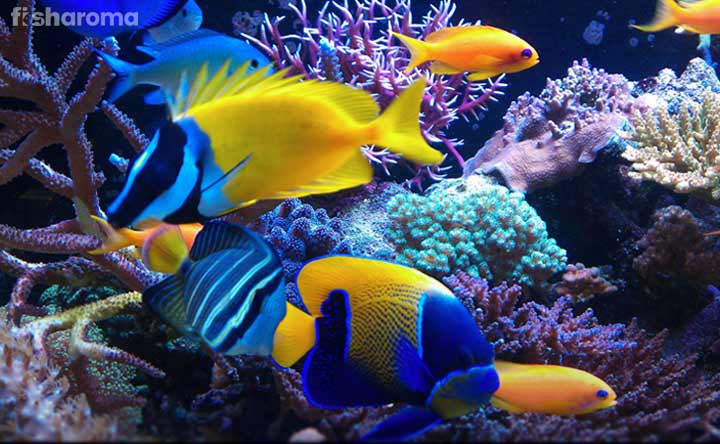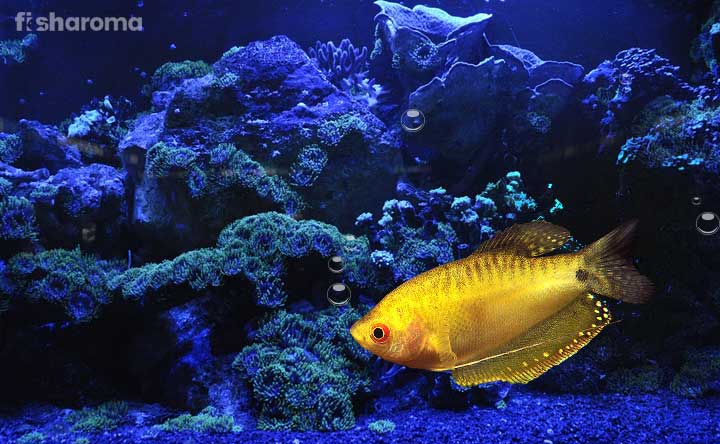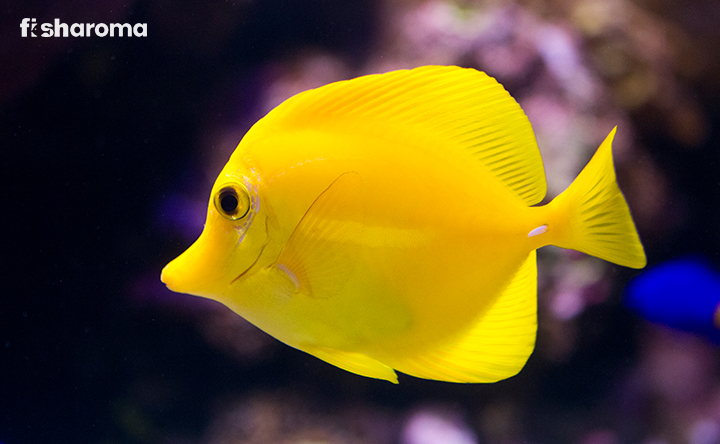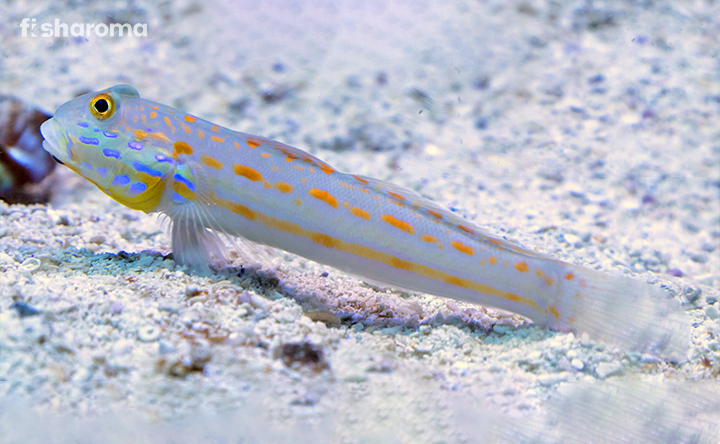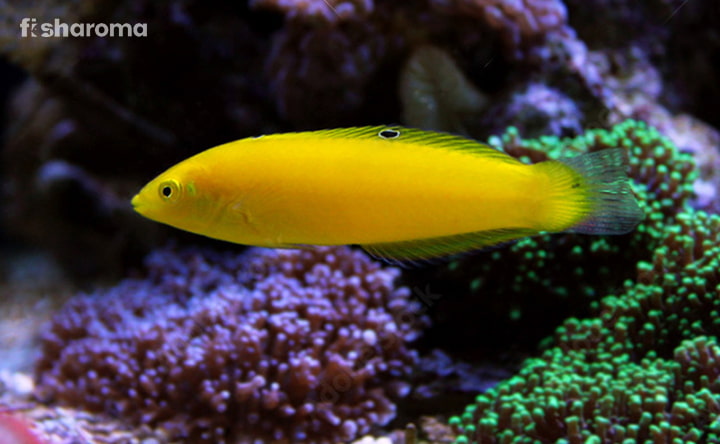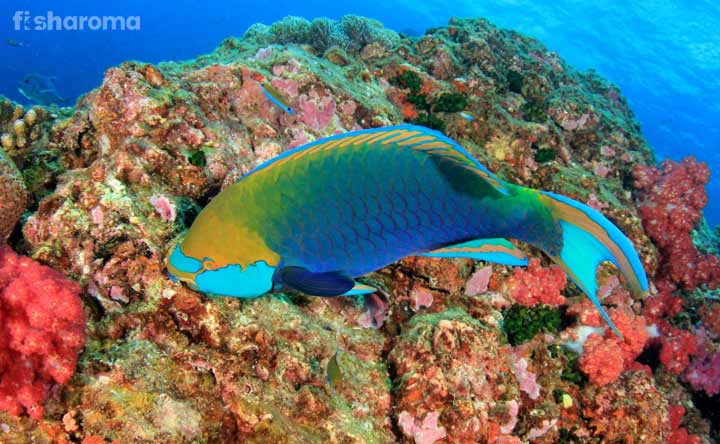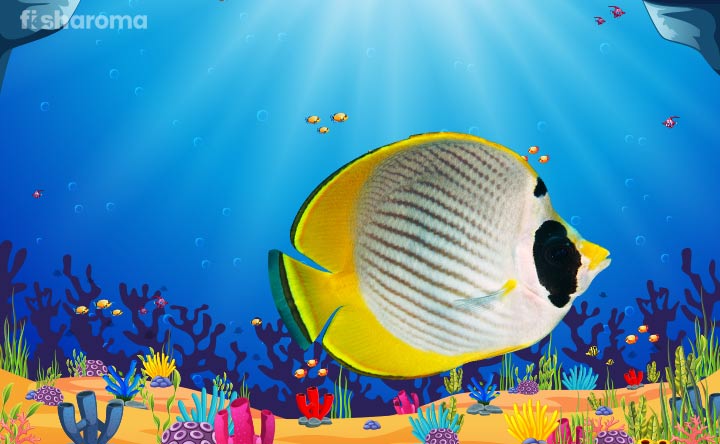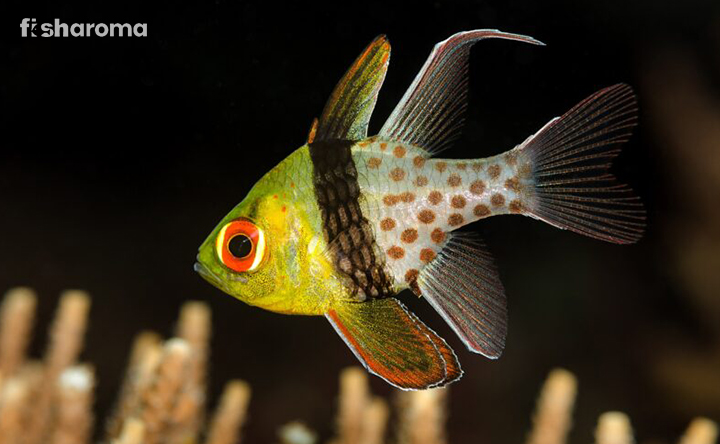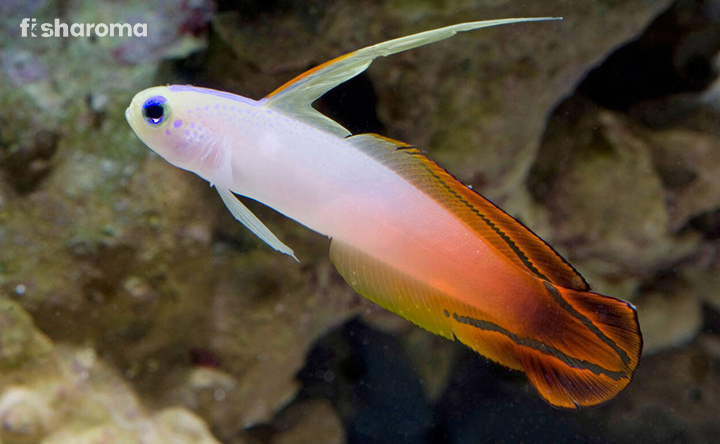Moray Eel – The Complete Care Guide of How to Pet Them
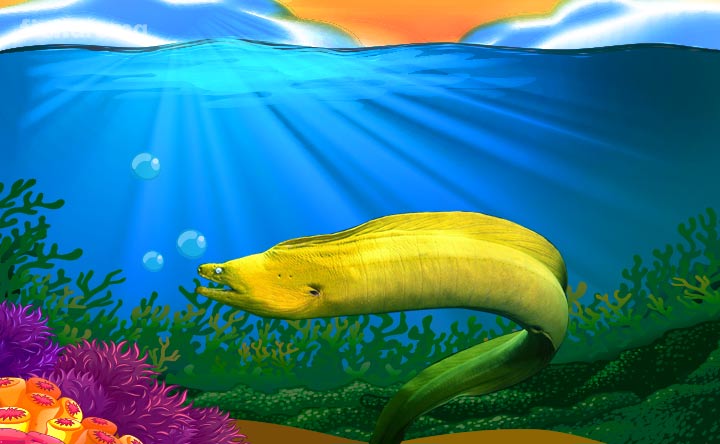
- Origin & Habitat of Moray Eel
- Appearance of Moray Eel
- Behaviour of Moray Eel
- Types of Moray Eel
- Lifespan of Moray Eel
- Diet of Moray Eel
- Tank Requirements for Moray Eel
- Water Type for Moray Eel
- Compatibility of Moray Eel
- Breeding of Moray Eel
- Moray Eel Diseases
- Difficulties in Petting Moray Eel
- Summary
Now, a Moray Eel may not be everyone’s cup of tea when it comes to selecting pets for your aquarium, but there has been a spike in the demand for unconventional aquatic pets in the recent past. And among them is the Moray Eel. With a fearful appearance, a Moray Eel definitely changes the mood of your aquarium. But due to the lack of experience of petting them, many pet enthusiasts are not aware of how to take care of them.
Well, worry not! We are here to provide you a complete guide of how to pet a Moray Eel while taking care of them in a healthy manner.
Key Specifications of Moray Eel
In order to understand this species, you first of all need to get a grasp on some of their most prominent characteristic features. The following table lists out the key specifications of a Moray Eel.
| Scientific Name | Muraenidae |
| Family | Osphronemidae |
| Origin | Tropical and Temperate Waters |
| Size | 6– 150” ( (7.6 – 400 cm) |
| Color | Green, Brown, White, Blue, Orange, Black, Grey, White |
| Care Level | Moderate |
| Lifespan | 10-30 Years |
| Temperament | Semi-Aggressive |
| Compatibility | Low |
| Tank Size | 15-30 Gallons (Minimum) |
| Diet | Carnivore |
Overview
Found in both shallow and deep water of tropical and sub-tropical regions across the world, Moray Eels are a saltwater species. Contrary to popular beliefs, they are not reptiles. They are a type of fish. To be specific, Moray Eels (in fact, not only them, but all types of Eels) are ray-finned fish. They are the largest type Eels found on earth.
Although predominantly a saltwater fish, few species of Moray Eels live in freshwater and brackish water (a mixture of saltwater and freshwater).
Origin & Habitat of Moray Eel
Moray Eels are mostly found in the saltwater of tropical and sub-tropical areas around the globe, especially the equator, which is also believed to be their origin.
Regions with coral reefs are also crucial for their survival. Rarely are they seen venturing into the shores. They prefer to hide in the crevices deep in the ocean.
Almost all species of this Eel live in saltwater environments that have an abundance of reefs. When it comes to shelter, they prefer dead patch reefs and coral rubble rocks rather than live coral reefs.
Appearance of Moray Eel
Moray Eels mostly get a bad reputation because of their fearful snake-like appearance. They have a long, slender body. The snake-like appearance is made more prominent due to the absence of pectoral or pelvic fins. However, they do come with a dorsal fin that runs all the way back to their tail. To be precise, it is a combination of dorsal, caudal and anal fins.
Their bodies are usually patterned, and in some species, the inside of their mouth is also patterned. They secrete protective mucus over their scaleless, smooth body, which in some species, contain toxic elements. Despite having large eyes, their eyesight is weak.
Due to them keeping their mouth open almost always, many get an impression that they are striking to bite. However, this is not the case (at least not always). They need to keep their mouth open for respiratory purposes, because it helps them send water to the gills at the back of their head.
Their widened jaws give them the appearance of a protruding snout. To add to the fear factor, they are equipped with dangerous sharp teeth and wide jaws. They have two separate lines of teeth – one located in the jaw and the other located in their throat. The teeth located in the throat further breaks down the food, that in turn, facilitates digestion. The ones at the back prevent prey from escaping their grasp. This second set of teeth is called pharyngeal jaws. Another noted feature of their teeth is that they are faced backwards which further prevents the prey from slipping out of their mouth.
Moray eels depend on their sense of smell instead of their vision to ambush their prey.
Size of Moray Eel
Depending on the species, the size of a Moray Eel varies from 4” to 13 ft. For example, the Tiny Snyder Moray Eel grows only 4.5” whereas the slender Giant Moray Eel, on the other hand, can grow up to 13 ft. The later can weigh up to 66 lbs.
Color of Moray Eel
Different species of Moray Eels come in different color forms. While some have solid color over their body, others have spots, stripes, blotches or patterns. The most common color forms are green, brown, white, blue, orange, black, grey, and white. Their underside is usually a contrasting pale color that enables them to avoid predators.
Behaviour of Moray Eel
One of the reasons for the increase in demand of Moray Eels as pets is because people are fascinated by their behavior.
Firstly, what sets them apart from other species is the way they swim. They swing in a curving S-shaped wavy manner to propel themselves forward. This provides a great spectacle inside your aquarium.
They live sneakily; hiding inside the crevices or behind rocks and corals, while peeking their head out to take a sneak-peek on their environment. This not only saves them from large predators, but also allows them to ambush their unsuspecting preys.
The mucus that they secrete through their bodies not only protects them from parasites and germs, but also becomes the food for cleaner wrasse. Thus, a mutualistic relationship is formed between the two, whereby cleaner wrasse eats the parasites and dead tissue off the Eel’s body. The wrasse gets food while the Eel gets health benefits from getting cleaned. The mucus also helps them dig up stronger burrows since the mucus adheres the sand grains together.
Within their own environment, they are considered one of the most dominant predators. While they are quite skilled at hunting alone, one remarkable feature of theirs that showcase their intelligence is their skill of group hunting with other species of fish. Their most notable hunting partner is the roving coral grouper. Their co-operative hunting begins with a head-shake between the two of them. They both combine their individualistic skills to hunt down preys.
If the size of their prey is small enough, they wrap themselves around them, crushing them with their power and grip and then swallowing them. They tie themselves in a knot around the smaller preys. When it comes to larger preys, they usually tear pieces of their flesh and eat them bite-by-bite.
They are a nocturnal being, going out for hunting during the night. However, in an aquarium setting, they can adapt to daytime feeding as well.
Types of Moray Eel
Moray Eels, themselves have over 200 types of variants. However, only 12 of them are deemed suitable for a home aquarium. To further narrow them down, only five of those 12 can co-exist with other fish in an aquarium.
Some of the most common species of Moray Eels are as follows:
Zebra Moray Eel
With an average size of 20”, they are recognized with their contrasting black and white stripes. They are pretty passive and take time to adapt to a captive environment. They can go through a long period of starvation.
Chain-link Moray Eel
They acquire their name through the chain-like patterns over their body. Extremely reclusive in nature, they can grow up to 30”. They feed upon crabs although they can adjust to prepared food in an aquarium as well.
Snowflake Moray Eel
This is the most common species of Moray Eel that is recommended for an aquarium because of their temperament. Less aggressive than other Moray Eels, they usually feed on mantis shrimp, crabs, and small fish.
Green Moray Eel
Coming in at a size of 8 ft, the Green Moray Eels are of course green in color and feed on large fish. They usually live at 40m depth from the ocean’s surface.
Giant Moray Eel
The largest species of Moray Eel, they grow up to 13 ft. They have leopard-like spots all over their body. They are extremely dangerous and have been known to attack scuba-divers, both when provoked and unprovoked.
Lifespan of Moray Eel
Depending on the species, a Moray Eel can live between 10-30 years. However, this is the average lifespan of Moray Eel when they are living in the wild. When living in captivity, due to the lack of exposure to natural elements, they may not live up to the fullest lifespan.
Diet of Moray Eel
They are carnivores by nature. Based on their eating habits, they can be categorized as durphagos (those who consume crustaceans, as in hard-shelled organisms like corals, molluscs, crabs) and piscivorous (those who consume fish). The former has round, short jaws with molar-like teeth that help break the hard shells of their preys while the later have pointed jaws with sharp long teeth that help them eat fish. They also feed on small octopus and shrimp.
The following is a list of food that you can feed your Moray Eel, both in live and frozen form:
- Shrimp
- Crabs
- Squid
- Octopus
- Small Fish
- Mollusc
You should maintain a healthy eating habit for the Moray Eel in your fish tank. They have a tendency to overeat. So, chances are there that they may not stop eating if you continuously feed them non-stop throughout the day. Feed them enough food twice daily. They are not fond of pellet food or flake food.
They also starve themselves when they go through a transition phase from live food to frozen food. Don’t panic in this situation. Let the Eel work their way out naturally.
Since moray eels have poor eyesight, it is advised to feed them food using a tong. Otherwise, they may mistake your fingers for food and bite them hard.
Tank Requirements of Moray Eel
Since they are an unconventional choice for pets, there is a lack of knowledge of as to how to keep them in the fish tank of your home. To set up a tank, bear the following points in mind.
Tank Size
Moray Eels can grow up to a large size. Hence, it goes without saying that you would need a large tank for them. Depending on the species of your Moray Eel, you would have to select a tank that can house between 15-30 gallons of water.
Nature of Lighting
Eels prefer to live in the nooks and corners of coral reefs and go on hunting at nights. Rarely do they come out to the surface of the water or to the shore. They prefer low lighting. Be sure not to include extremely bright lights.
Tank Lid
Although Moray Eels rarely venture to the surface of the water, it is safe to keep a tank lid because it can’t be denied that they are a dangerous creature. You don’t want to risk them rising to the top of the tank and escaping or biting you when you are near the tank surface. So, be on the safe side.
Filter
The presence of a good filtration system is vital because Moray Eels tend to produce a lot of waste. Without a filter, chances of the water becoming murkier are very high. You can choose between a canister and a wet-dry filter for your fish tank. If the waste products are not filtered or eradicated properly, then sometimes Moray Eels even bury themselves in the substrate.
Ornaments
As we have discussed earlier, Moray Eels love to hide themselves. Therefore, keeping a bunch of corals or artificial rocks is a good idea. Placing an aquatic cave with large holes also works well for the Eels. Make sure that the holes of the caves are large enough so that the Eels don’t get stuck in them.
Presence of Flora
If you want to keep flora in your aquarium, especially if you are going for natural plants, then anemones are the best idea, since Moray Eels live with anemones in their natural habitat.
Now that you know how to set up the tank for a Moray Eel, let us help you with how to manage the water for the aquarium.
Water Type of Moray Eel
Moray Eels are saltwater fish. Therefore, it goes without saying that the water in your tank has to be saline. You just can’t randomly fill up your tank with tap water. You can buy saltwater from your nearest pet store or can buy sea salt from the market and dissolve them in the water. Although this process is a bit difficult and must be done cautiously. The salinity of the water should be 1.022-1.025
Once the saltwater has been set up, you have to ensure that the water matches the following criteria as well:
Temperature
Since their natural habitat is the tropics, Moray Eels thrive in slightly warm water. Make sure the temperature of the water stays between 74-79°F (23-26°C).
pH Level
The optimal pH level is 5-7. To ensure that this is maintained always, test the pH level of your fish tank water on a weekly basis. A number of good, affordable pH-testing kits are available in the market.
Replacement Procedure
If you are keeping a Moray Eel in your tank, the water is going to get dirty on a regular basis. You need to change 35% of the tank’s water on a weekly basis. Also, try to clean the ornaments (artificial plants, caves, rock) at least on a monthly basis. However, do practice caution while cleaning the ornaments and the interior tank walls. Make sure the Eel is kept in another container or bucket that has a lid on during this process. You don’t want to get bitten by them while cleaning your aquarium.
Compatibility of Moray Eel
Moray Eels prefer staying alone. They are not highly territorial but can become aggressive during hunting or feeding time. If you want to keep more than one Moray Eels together, make sure that you introduce all of them to the tank together. This would avoid a situation where one Eel would feel that it has already settled in and someone else is coming to claim their space.
The tank also has to be large enough to accommodate more than one Moray Eel. Make sure they have enough space and hiding spots. Ideally, we recommend keeping only one Moray Eel in a fish tank.
Suitable Tankmates for Moray Eel
Moray Eel can co-exist with other aquatic fish and animals, but you need to keep in mind certain aspects.
If you want to keep a piscivorous Moray Eel with other fish, make sure that the fish are introduced to the tank before the Eel. Also, the other fish have to be at least thrice the size of the Eel. These would make the Moray Eel realize that the other fish are not to be treated as food.
The following tankmates are suitable for a Moray Eel:
- Cleaner Wrasse
- Lionfish
There have been instances when Moray Eels have also attacked the afore-mentioned fish in a tank. So, be very careful when you keep other fish together with a Moray Eel. Especially, make sure they are always well-fed, because in moments of hunger, they may attack their tankmates.
Unsuitable Tankmates for Moray Eel
Most small fish should be avoided as tankmates for a Moray Eel. This is for the safety of other fish. And now coming to the safety of a Moray Eel, you should avoid the following fish since they can tear, bite and maul your Eel:
- Groupers
- Snappers
Although the hunt well with groupers in the wild, they shouldn’t be kept together in a captive environment.
Breeding of Moray Eel
Most species of Moray Eels start breeding at the age of three years. Breeding in captivity is difficult with a Moray Eel because usually a female mates with several males before releasing her eggs. And in absence of more than one male, the chances of them releasing eggs become uncertain. If the eggs are successfully released, the males fertilize them. The larvae then float in the water surface for around 10 months. So, as you see, waiting and maintaining this process for such a prolonged time is pretty difficult.
In the wild, many are eaten by predators in the larvae stage. Those who survive, swim to the bottom of the ocean around a year later.
Moray Eel Diseases
As we mentioned earlier in our diet section, Moray Eels have a tendency to eat non-stop. If you don’t control their food habits, they tend to overfeed themselves and become fat that leads to liver complications. Those being said don’t underfeed them as well.
They also suffer from inflammation and skin lesions as well.
Poor water condition will also naturally result in bad health for your Moray Eel.
Difficulties in Petting Moray Eel
Moray Eel doesn’t require intensive care but you need to keep a check on their relationship with other inhabitants. Although they are not violent per se, in moments of hunger and threat, they can strike attack without warning.
Their adaptability to frozen food is also low. You would have to practice patience for them to completely transition into frozen food.
Interesting Facts about Moray Eel
- Female Moray Eels release up to 10,000 eggs at a time during mating.
- Green Moray Eels are actually brown in color. But since the mucus that they secrete through their body being is yellow in color, their body seems green; because yellow mixed with brown gives a shade of green.
- King Henry I (1068-1135) supposedly died from indigestion caused by consuming either a Moray Eel or a Lamprey Eel.
Summary
Moray Eels are fascinating creatures. They are shy yet fearsome, calm yet aggressive. With the demand for unorthodox pet fish on the rise, Moray Eels are seeing themselves positioned at people’s homes these days. They add a unique view to your aquarium with their swimming patterns and overall behavior. They are difficult to breed and take time to adjust to frozen food. So, if you are up for some challenge, then this should be an ideal pet for you.
Other Saltwater Reef Fish
Just like Moray Eels, the following fish also thrive and sustain in saltwater reefs:
- Dwarf Angelfish – They love to dominate their environment and spend most of their time looking for algae in the reefs.
- Butterflyfish – Vibrantly colored, they make use of their extended snouts to find food in the reefs. They have a varied diet.
- Goatfish – A well-known bottom feeder, they love hunting in groups and scavenging through coral reefs.

